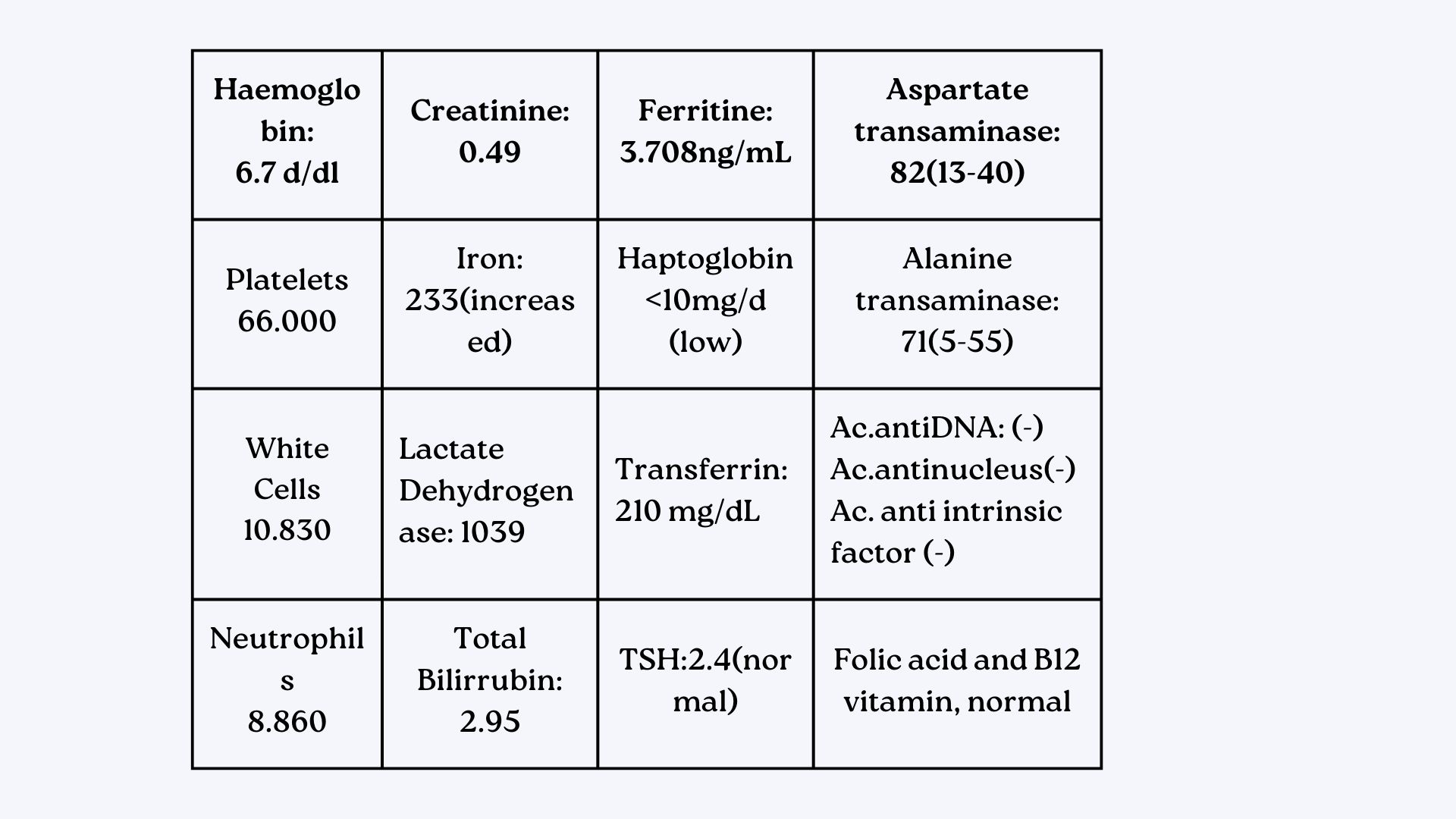Bone Marrow Necrosis. A Name for a Patient’s Problem

Mariza was a young woman who loved classical music. She worked as a computer game designer, played sports and helped immigrant children. Without knowing how, almost overnight, she began to feel very tired, without strength and with a feeling of dizziness at times. Bruises also started to appear on her arms and legs when she gave herself a little bump. Her thoughts led her to think that she had leukaemia.
Due to the lack of strength to move, he went to the emergency department of the hospital. There, she said that she had had no fever, no cough, no diarrhoea and no respiratory difficulties. As a significant finding, he reported that his bones ached in general. She had not traveled abroad recently.
When the doctor examined her, she only told her, that she felt pale and spoke of the bruising on the skin, but could not find any lymph nodes or any other pathological finding.
A first blood test was carried out, but she was still worried about the possibility of leukaemia.

Peripheral blood smear: anisopoikilocytosis of red series with polychromasia, and presence of some erythroblasts. Frequent schistocytes (5.4%). Thrombopenia. No blast cells or atypical promyelocytes were observed.
Clinical Reasoning
The results are compatible with a process of red cell destruction, due to mechanical causes or microthrombi in the circulation, which, together with the decrease in haptoglobin, suggest a haemolytic anaemia.
Clinical Evolution
The patient was admitted to the Hematology Department, where an acute neoplastic hematological process was reasonably ruled out by means of a peripheral blood smear, and an alternative diagnosis of Thrombotic Thrombocytopenic Purpura (TTP) was proposed as a “worst case scenario”.
In order to diagnose or eliminate this diagnosis of TTP, a fundamental laboratory test was requested.
Could you suggest what this test was? You can know the answer HERE in a scientific paper.
A bone marrow biopsy was also performed to observe the architectural characteristics of the bone marrow, and definitively rule out an acute hematological neoplastic process.
Bone marrow biopsy results:
Bone marrow with low cellularity of the three series, with microthrombi and signs of necrosis. Bone marrow necrosis. Atypical cells, compatible with a neoplastic epithelial origin, were also observed.
Clinical Summary
A young woman, with no previous history, begins with subacute symptoms of asthenia, hyporexia, weight loss, bone pain, predominantly in the spine, together with skin haemorrhages after minimal trauma. Blood tests showed hemolytic anaemia, with a decrease in haptoglobin, and the presence of schistocytes in peripheral blood, with thrombopenia, an a leukoerythroblastic reaction. Bone marrow examination showed bone marrow necrosis and infiltration by neoplastic epithelial cells. There were no other symptoms to suggest the origin of the neoplastic cells, even after a body CT.
Final Diagnosis
At first it did not seem easy to reach the final diagnosis. However, with persistence and following the right steps, the possible site of origin of the neoplastic cells was obtained and confirmed by biopsy.
Which final test do you think allowed you to obtain a sample and from which organ? In our case UpToDate helped us. You can get more information about the subject HERE
ADDENDUM: Bone scan from the patient

Author
Lorenzo Alonso Carrión
FORO OSLER
DX: Gastric adenocarcinoma



